
Drill into timber, soft metal and hard materials including brick and concrete with the RYOBI 18V ONE+ Hammer Drill.
Choosing the right battery can sometimes be a little confusing. The information on this page will help you choose the right size battery for your products and tasks.
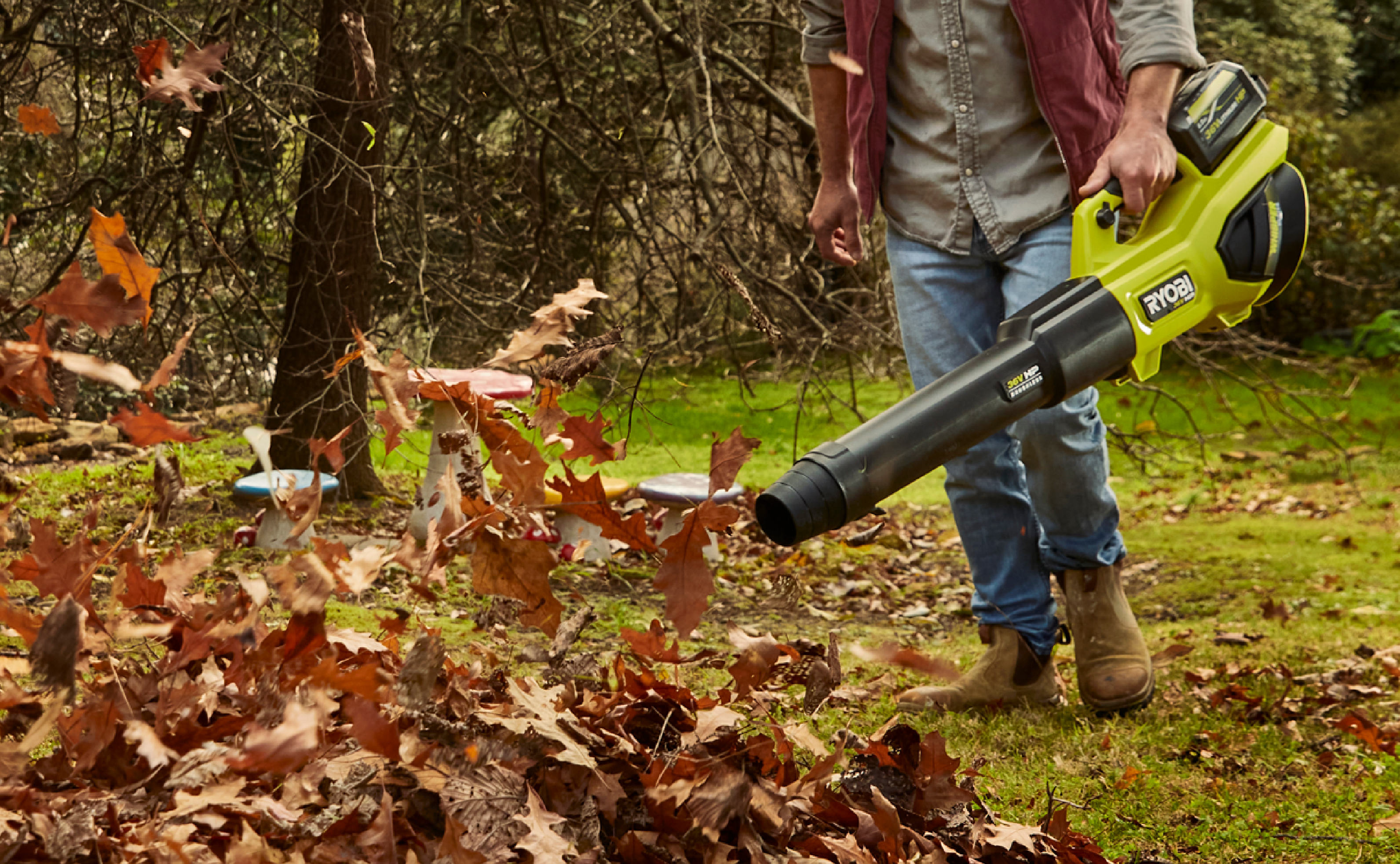
If you love spending time in the garden and therefore require your tools to have longer runtimes, RYOBI 36V Lithium batteries are up to the challenge. You’ll find them ideal for practically every general gardening task.
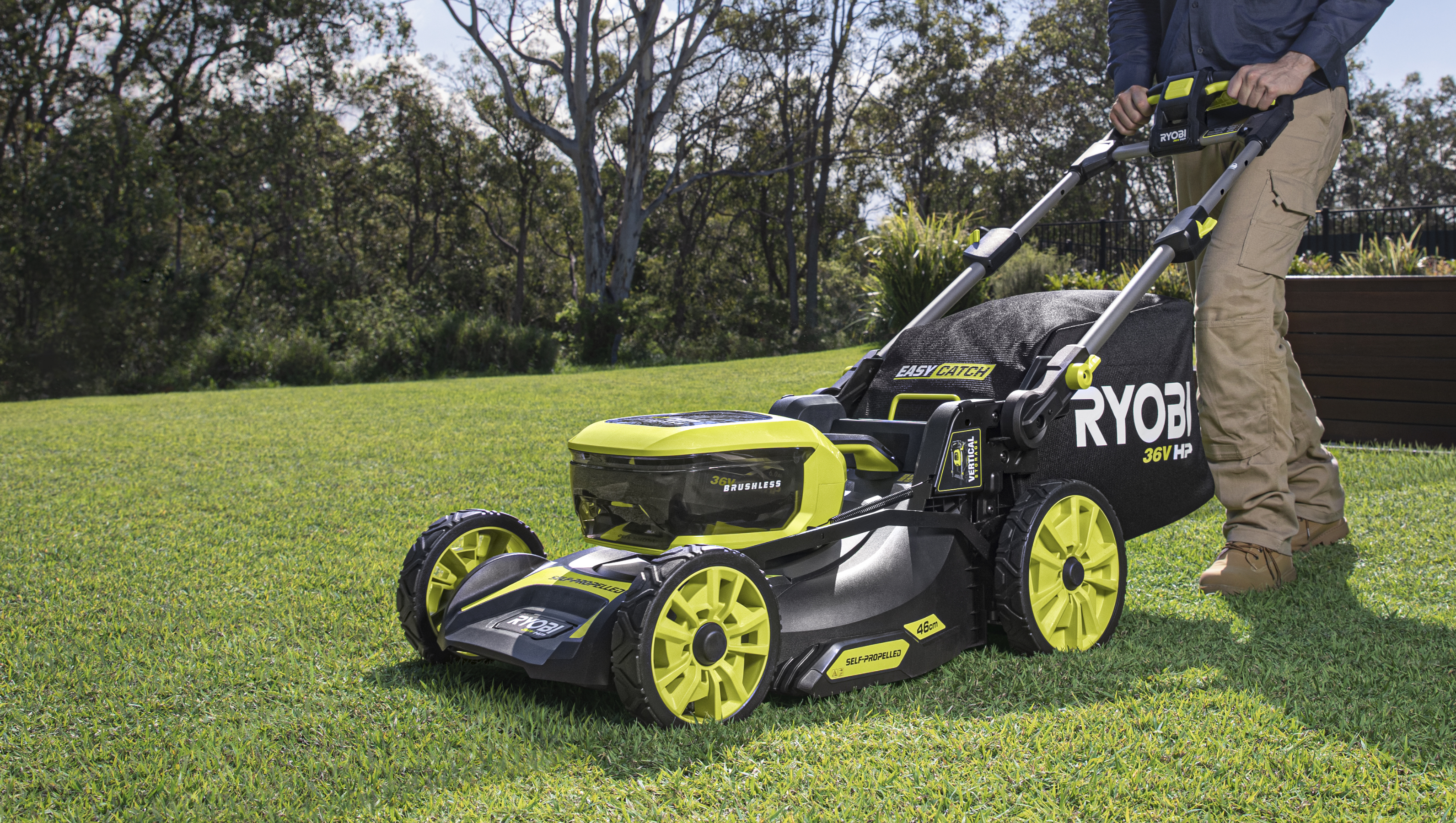
For more complex gardening tasks that require even more power and longer runtimes, 36V HP, with larger 27100 cells deliver added power and increased runtimes. They’re engineered to enable you to push your garden tools harder for longer.
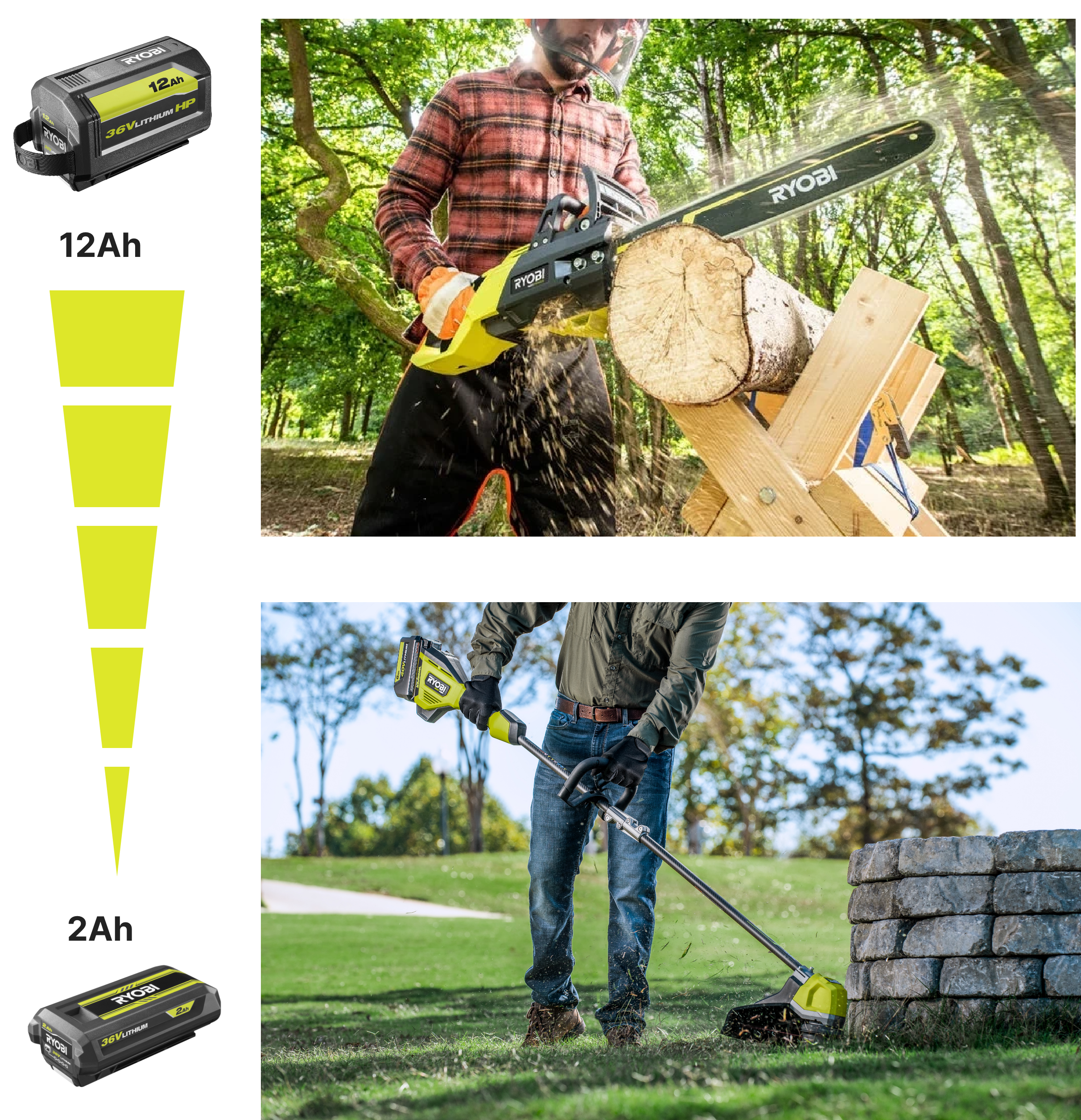
Performance and runtime – High Ah batteries provide longer runtimes and increased power to do more. This is often a requirement of power-hungry tools and products, like lawn mowers cutting long grass on a large lawn, a chainsaw cutting wood for a week-long campfire. They’re so powerful they make petrol power extinct!
Versatility and convenience - Low Ah batteries are a great choice for tools like a line trimmer or a hedge trimmer, where a lighter battery would deliver a comfortable experience over extended periods of use.
RYOBI 36V batteries range from 2Ah right up to 12Ah. 36V batteries are compatible with RYOBI 36V products*.
*Refer to user manual
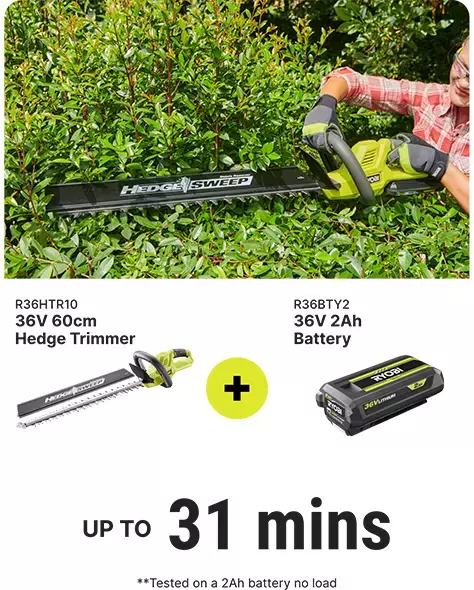
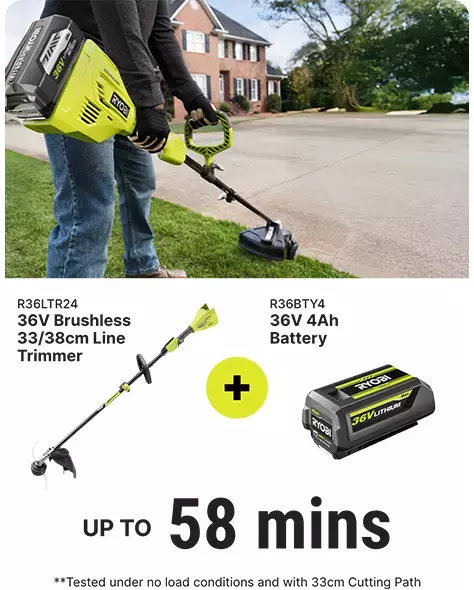
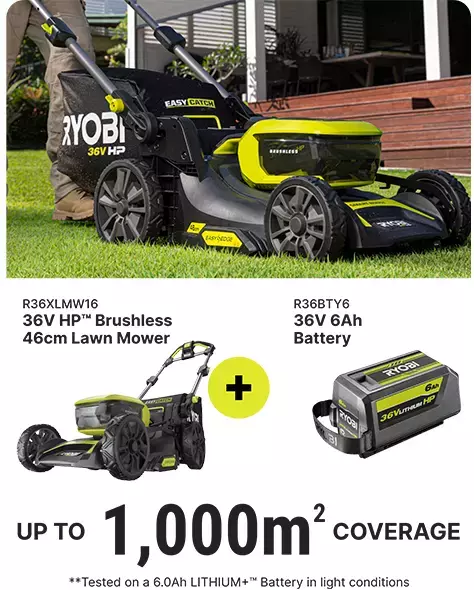
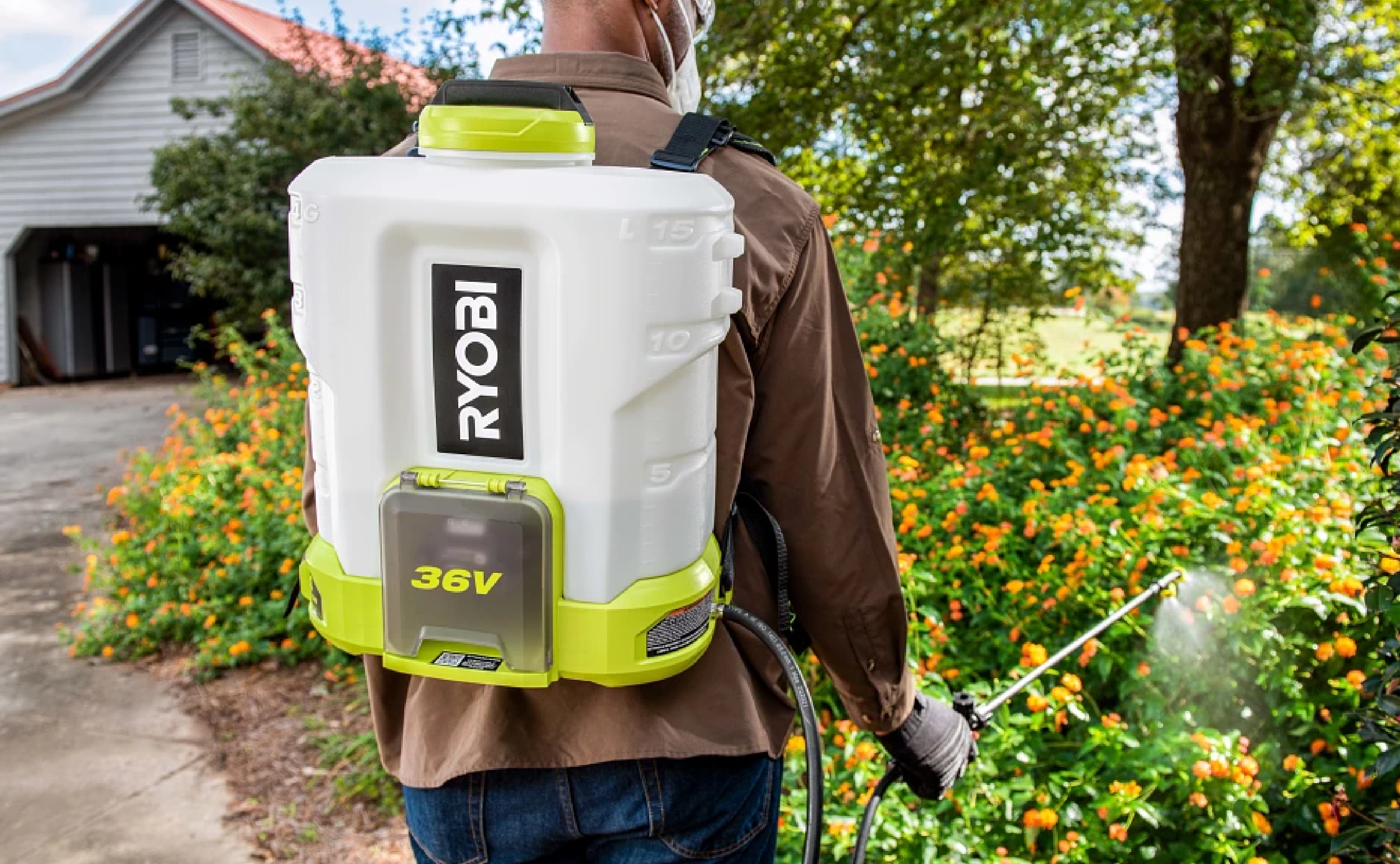
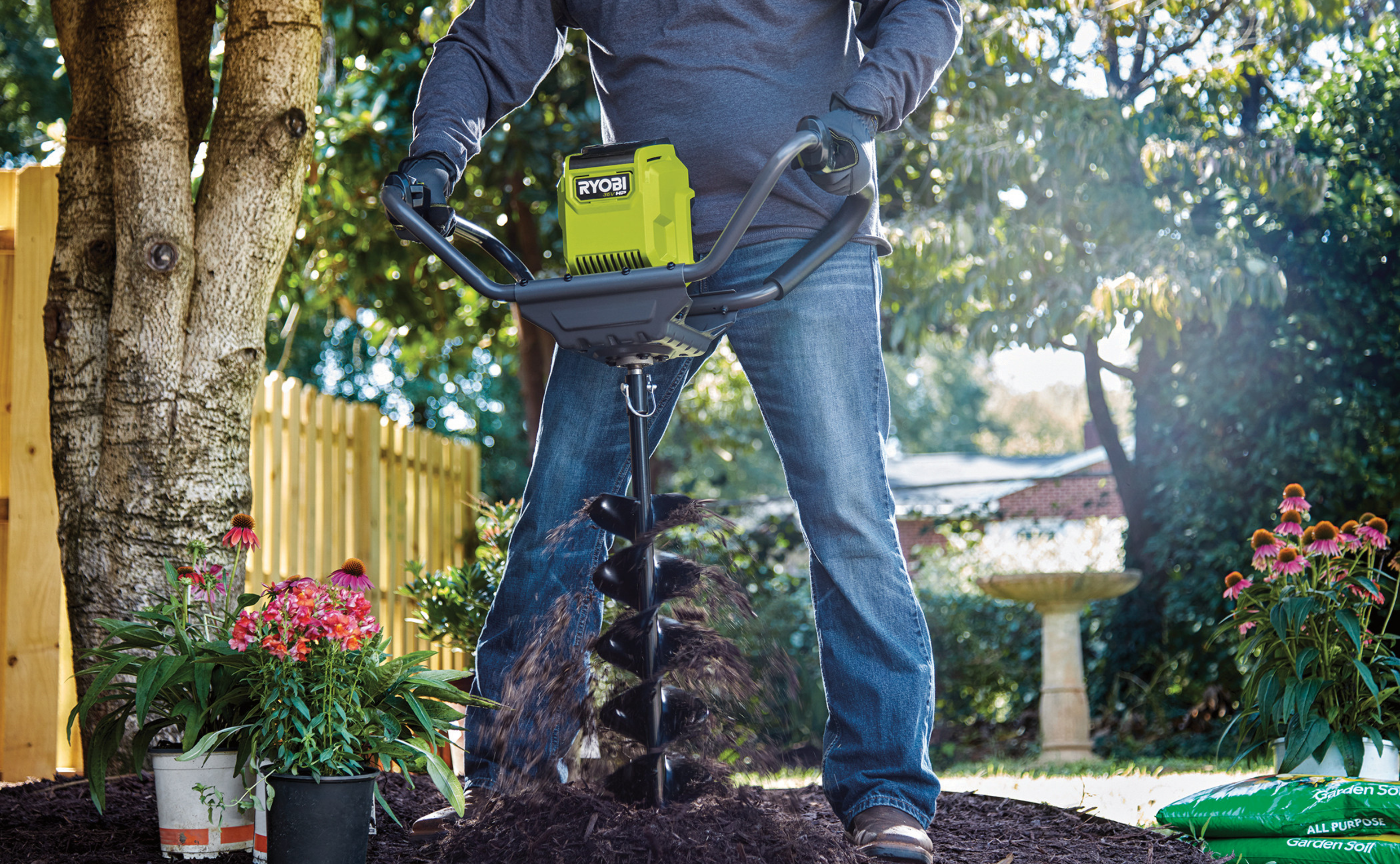
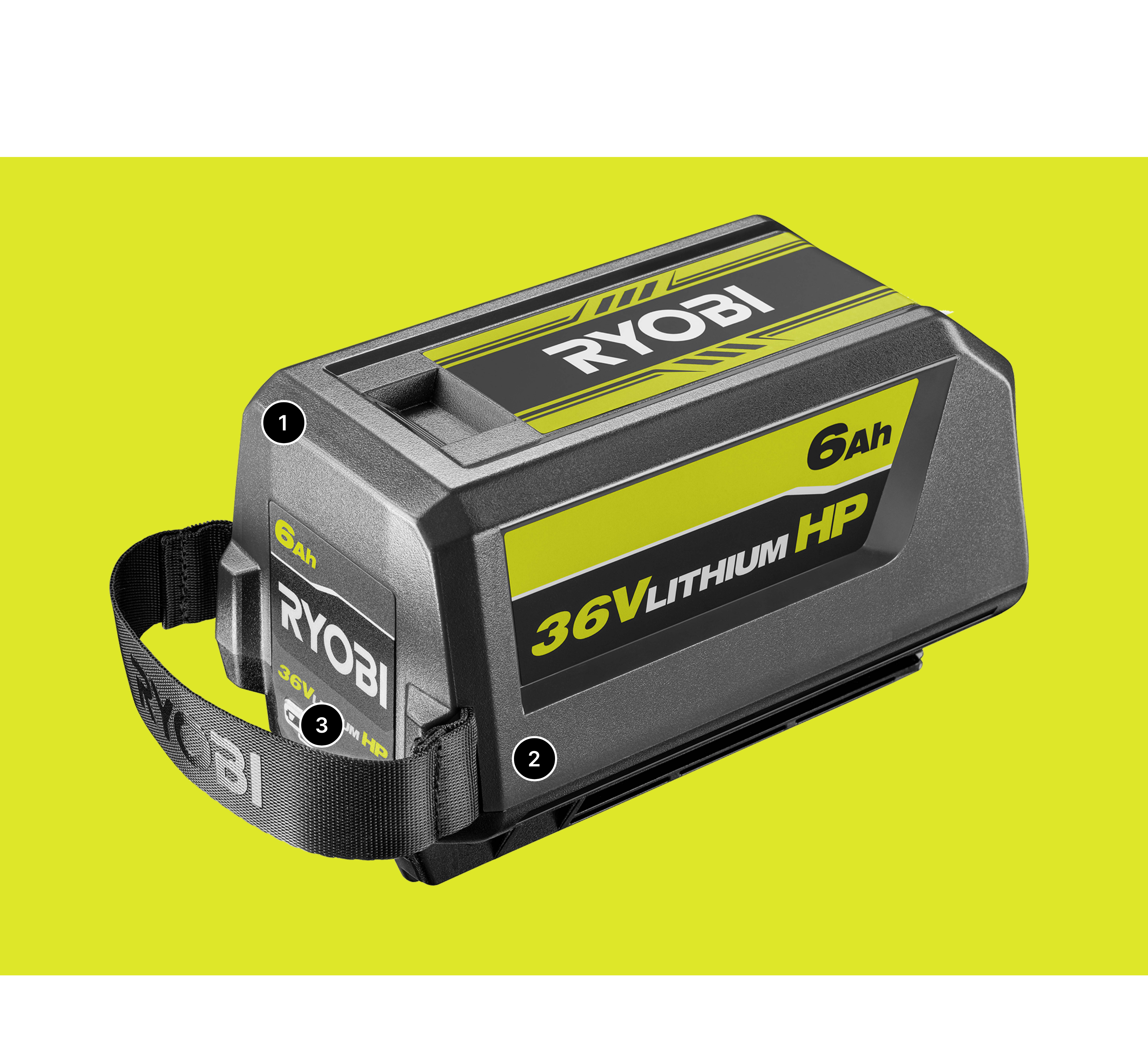
RYOBI 36V batteries are built using only the best components such as high-performance Li-Ion cells and contain intelligent battery electronics. This ensures reliable power delivery, efficiency and durability.
This is achieved through:
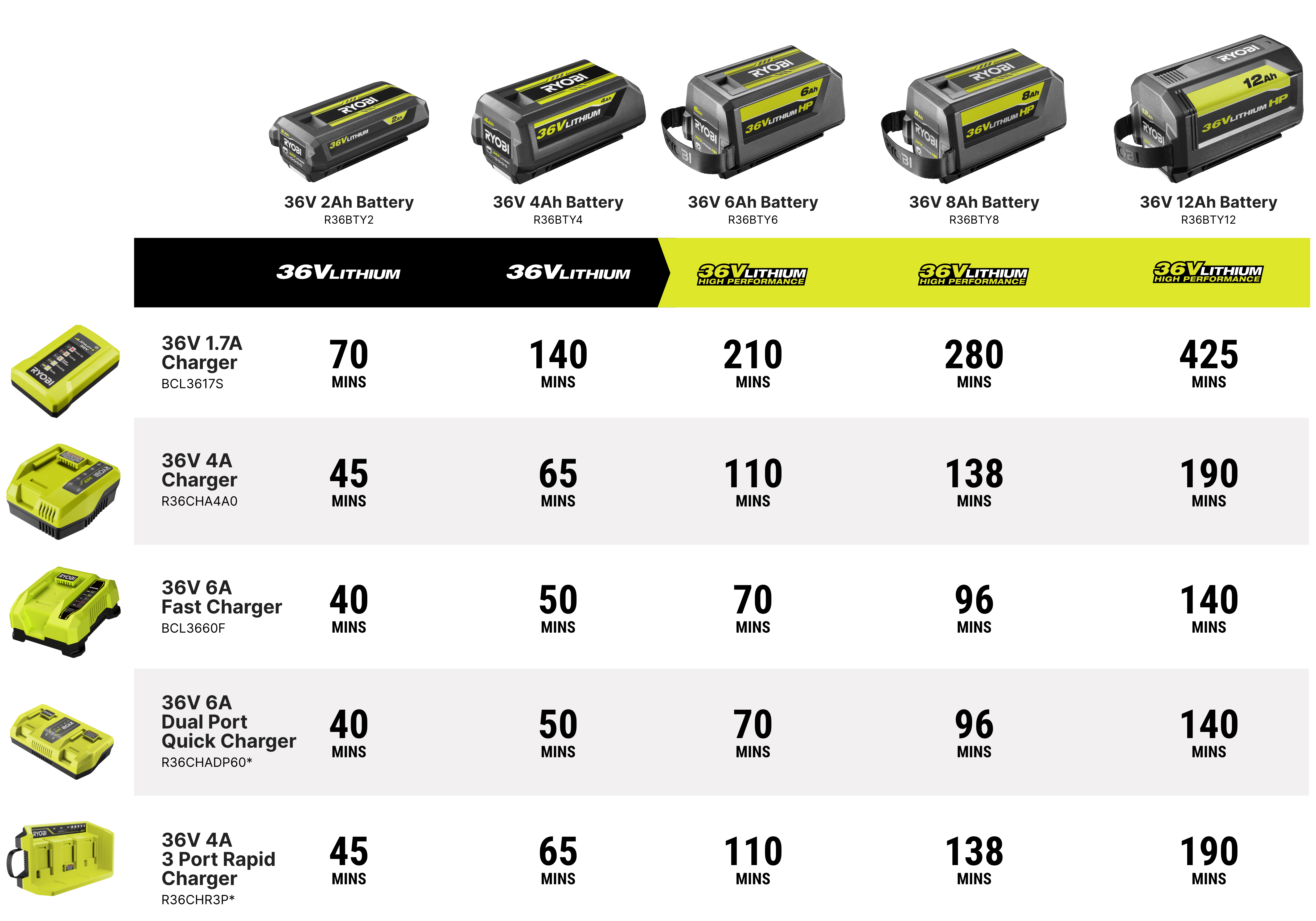
*Charge times may vary depending on condition of battery pack
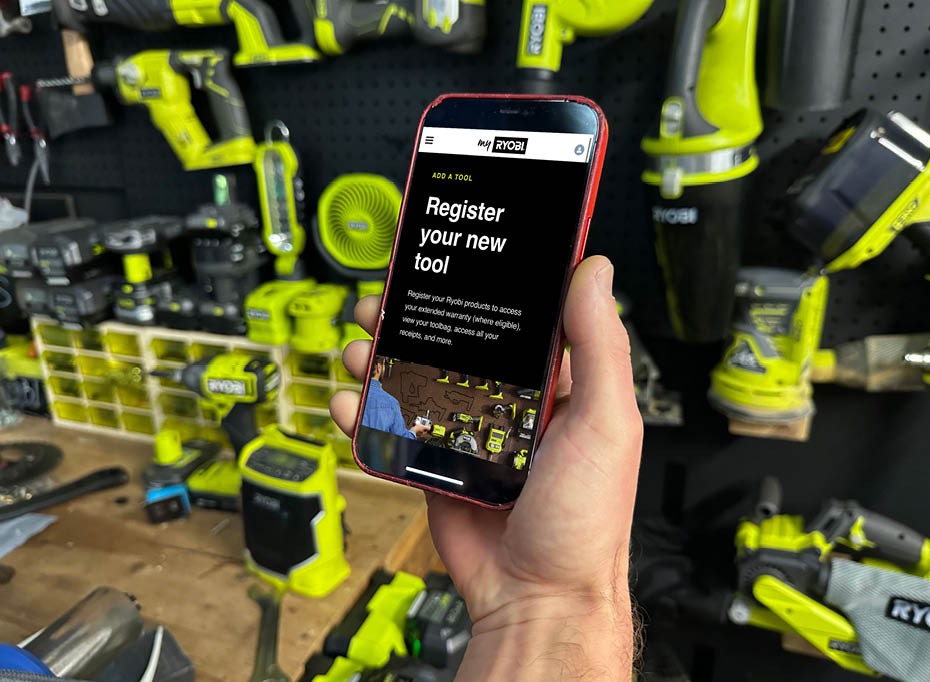
At RYOBI, we believe in the quality and durability of our products, that's why we back them with a comprehensive warranty. You can purchase any of our products with peace of mind knowing that we've got your back.
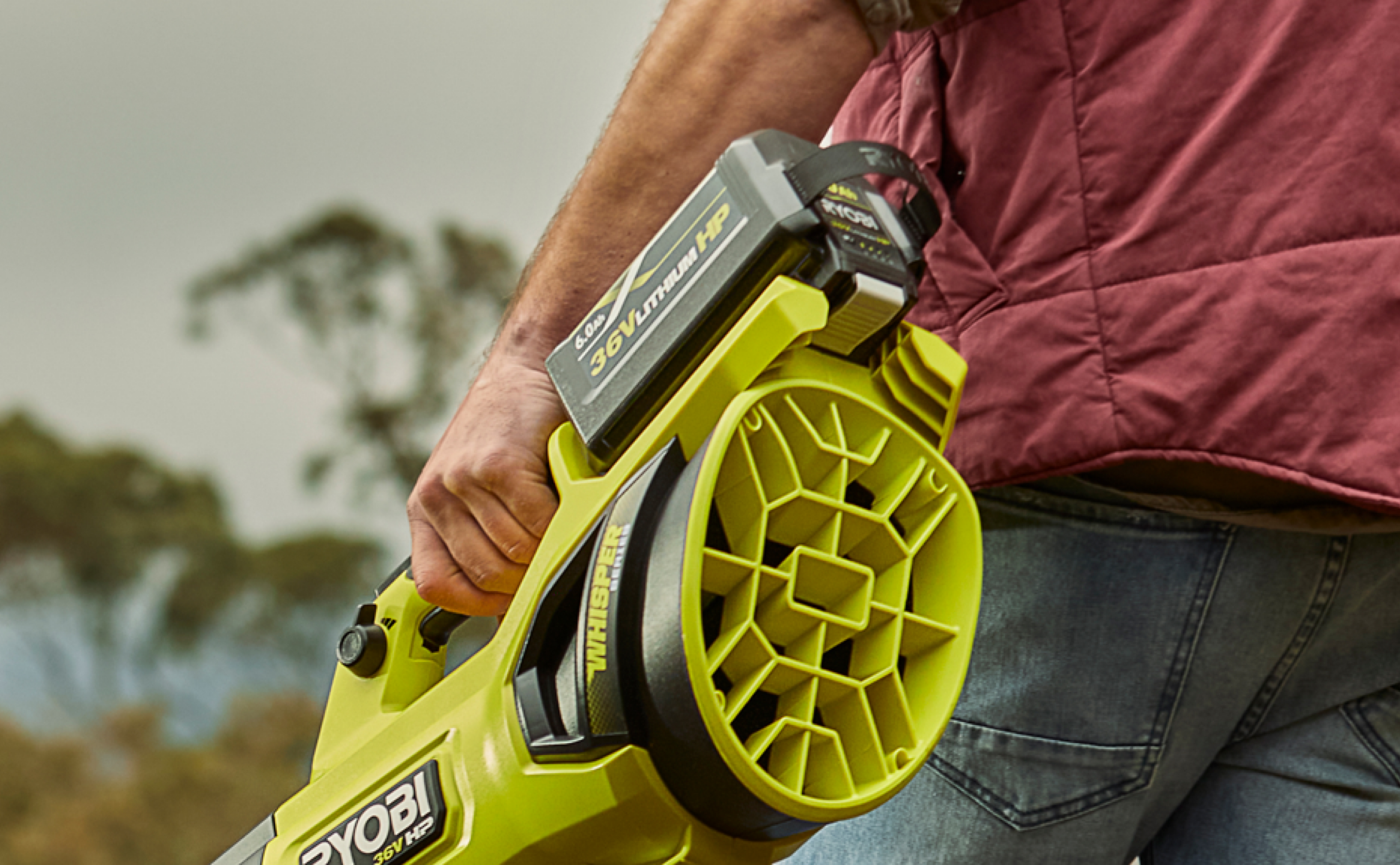
Need more help? See below our FAQs to find answers to battery-related questions, troubleshooting tips and more.
RYOBI has a range of different amperage chargers - the higher the A (amperage) the faster the battery will charge. You can view our range of 18V chargers in the charger category on our website. Currently, the 8A Rapid charger (RC18180) is the fastest charger we sell.
You may not be using the right battery for your tool or project.
Where more power or runtime is required, larger amp hour (Ah) batteries are recommended. These batteries hold more charge and allow you to run higher powered tools, like circular saws, chainsaws and lawn mowers. The higher the Ah the more runtime you will get. For example, a 2.0Ah (RB1820C) battery will make 34 cuts* versus a 4.0Ah (RBC1840C) battery that will make 95 cuts* with a 18V HP™184mm Circular Saw (RCS18X).
*making cross cuts in 140mm x 45mm MGP10 yellow pine.
The 18V ONE+ 2.0Ah battery will work in circular saws, reciprocating saws, blowers or lawn mowers. But where more runtime and power are needed for longer, we recommend a minimum 4.0Ah battery.
How old is your battery?
Lithium batteries don’t last forever. Just like our phones and cars, batteries need replacing. If your battery is older than 3 years it might be time to purchase a new one and recycle the old one. You can also follow the tips below on how to get the maximum runtime and life out of your battery.
To obtain the longest possible battery life, always:
You may need to review the type of battery you’re using for your tool or project.
There could be several reasons why your battery isn’t charging:
Flashing red: This indicates your battery is either too hot or too cold. When the battery reaches the necessary cooled or warmed temperature, the charger will begin flashing green in fast charging mode.
Flashing red and green: Battery or charger may be defective:
Flashing green: Battery is fast charging.
Fading green: Battery is being charged at a lower rate.
Solid green: Battery is fully charged and ready to use.
Solid orange: This indicates your battery is either too hot or too cold. When the battery reaches a cooled or warmed temperature, the charger will begin fast charging mode by flashing green.
Flashing red and green: Battery or charger may be defective:
Flashing green: charge in progress.
Solid green: Fast charging complete. Battery is ready to use.
The charging time for a RYOBI battery can vary depending on the size of the battery (Ah) and the charger (A) being used. RYOBI has a range of different amperage chargers - the higher the A (amperage) the faster the battery will charge.
For example, below are the average times a RYOBI 18V 4.0Ah battery will fully charge in different A (Amperage) chargers.
| 2A | 145 minutes |
| 4A | 80 minutes |
| 5A | 70 minutes |
| 8A | 45 minutes |
Charging Status Indicator: Many RYOBI chargers have LED indicators that show the charging status, which can be helpful to determine when the battery is fully charged.
No. Always remove a battery from the charger once it is fully charged to protect the battery from over-charging. Over-charging can damage the battery, reduce its lifespan, or possibly cause a safety hazard.
No, you cannot use a RYOBI 18V battery in a RYOBI 36V tool, and vice versa. RYOBI tools and batteries are designed to be used with specific voltage ratings, and they are not interchangeable.
A solid green light on your charger indicates that your battery is fully charged.
Bunnings has a national battery recycling program; it is free and easy to use.
All stores have battery recycling units, making it convenient for RYOBI customers to drop off used batteries with confidence, knowing they’ll be recycled.
You can charge your battery any time.
Yes, RYOBI 18V batteries are backwards compatible with the majority of Ni-Cd or Ni-Mh tools.
RYOBI AU/NZ chargers can only be used in Australia and New Zealand.
Power supply in normal household voltage, 220V – 240V, 50Hz 60W.
Store the battery indoors where the temperature is below 27°C and not exposed to moisture. Do not store your battery in the charger as this may deplete the battery's charge overtime. Store the battery in a “charged” condition (minimum of 30%-50% charged). To charge the battery after a six-month storage period, it is recommended to discharge the battery to about 10% - 20% (1 bar, by running it in a tool) and charge afterwards to maximise the battery lifetime.